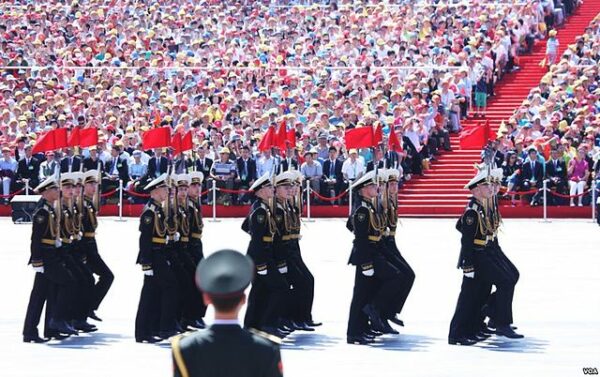China has revealed the first flight of a new jet trainer built for aircraft carrier operations, marking a notable leap in its push to modernize naval aviation.
Developed by the Hongdu Aviation Industry Group (HAIG), the prototype shows a twin-engine configuration, reinforced landing gear, and dual angled tail fins—features tailored for the harsh demands of carrier takeoffs and landings, according to reports. Analysts have compared its profile to the American Boeing T-7A Red Hawk, though with modifications such as a double front wheel and strengthened components designed for catapult launches and arrested recoveries on carrier decks.
A 2023 Chinese patent describes the aircraft as a “twin-tail jet with side-mounted intakes,” accompanied by illustrations of a tandem two-seat cockpit and large air inlets suitable for shipboard flight. Experts believe the trainer will serve not only to instruct pilots for the People’s Liberation Army Navy (PLAN) but could also evolve into light combat variants for interception or surface attack missions. Key indicators of its carrier orientation include the durable landing gear, a potential tail hook, and a dependable two-engine layout.
Maybe a new image of the new trainer from HAIG. pic.twitter.com/aciA8J9TU1
— @Rupprecht_A (@RupprechtDeino) October 29, 2025
The project comes as Beijing accelerates efforts to modernize its carrier air wings. Existing trainers such as the JL-9 and L-15, while serviceable, are limited in replicating the dynamics of modern carrier aviation. Based in Nanchang, Jiangxi Province, HAIG currently produces the L-15 Falcon—a platform widely used by the PLA Air Force and several foreign customers—but it lacks the adaptations needed for shipboard deployment.
The new design appears to close that gap. As China’s newest aircraft carrier, Fujian, continues sea trials, the demand for a carrier-specific trainer has become increasingly urgent. Current options, including the JL-9 derived from the older J-7 airframe, simply do not offer the agility or resilience required for realistic deck operations, and the L-15 remains optimized for ground-based instruction.
HAIG’s latest model is expected to fill that void with a purpose-built solution for the PLAN’s next generation of aviators. In time, it could form the basis for compact attack or multi-role variants, further extending its utility beyond training.
The unveiling of this prototype underscores China’s drive to strengthen its maritime air arm, reducing dependence on land-based adaptations and edging closer to parity with global naval powers.
[Read More: Lincoln Bedroom Updated]











Can we counter jets??
Don’t underestimate the technology and equipment the Chinese have.